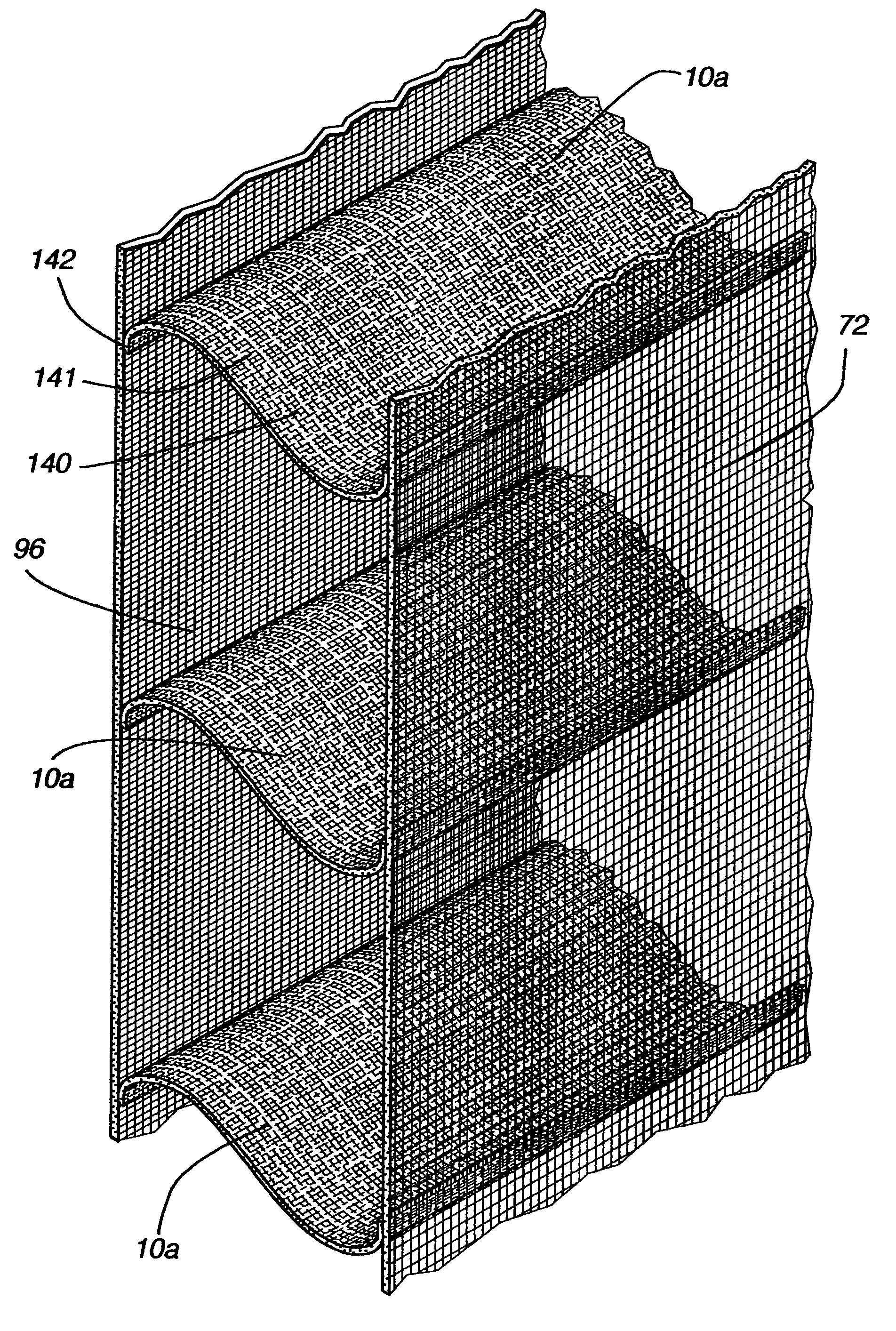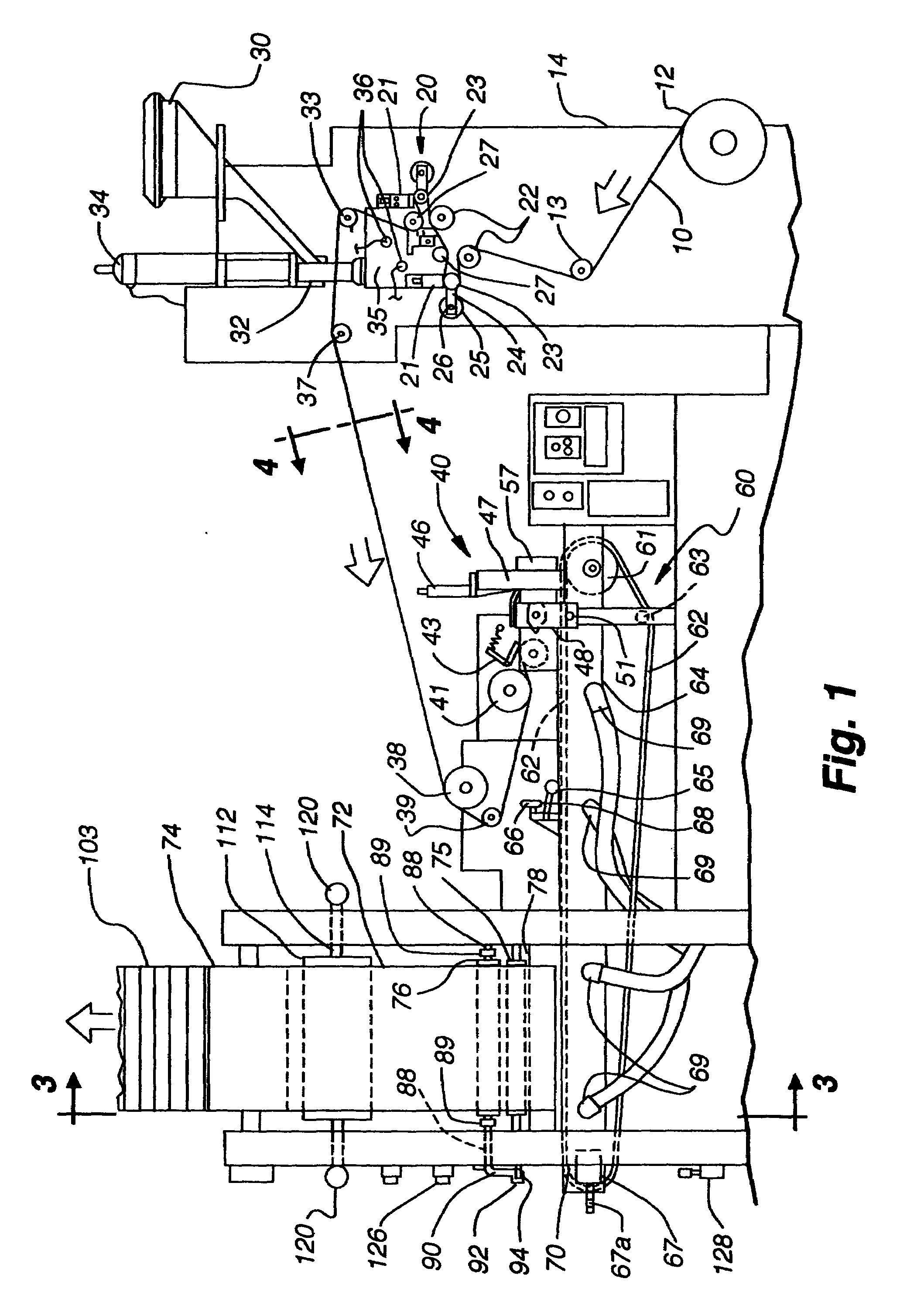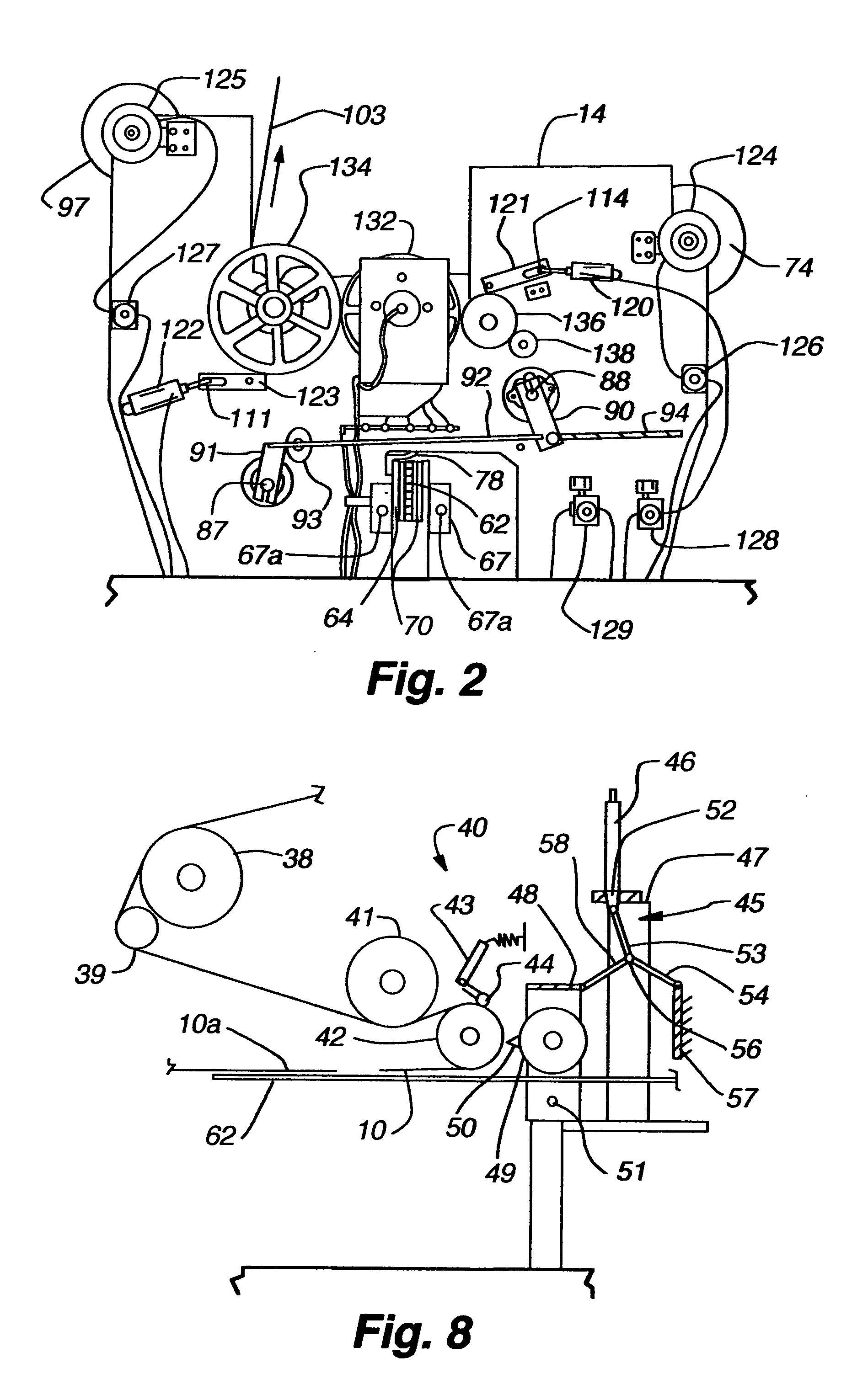Fabric light control window covering
a technology of window coverings and fabric, applied in the field of fabric window coverings, can solve the problems of lack of one feature of the window covering, failure to meet the requirements of the application, so as to prevent distortion, constant and uniform pressure, and constant feed rate
- Summary
- Abstract
- Description
- Claims
- Application Information
AI Technical Summary
Benefits of technology
Problems solved by technology
Method used
Image
Examples
Embodiment Construction
[0062]Referring to the drawing and, in particular, first to FIG. 1, the method and apparatus according to the present invention may be explained in greater detail. Vane material is provided as a continuous strip material from supply roll 12. Vane material 10 first passes around idler roller 13 mounted on frame 14. The vane material then enters adhesive applicator assembly 20, where adhesive nozzles 21 apply a thin line 16 of hot-melt adhesive to each side of the vane material 10 (see FIG. 4). While the apparatus is explained below in connection with hot-melt adhesive, it should be readily appreciated that the same principles are generally applicable to other types of liquid adhesives.
[0063]In assembly 20 vane material 10 first passes around alignment roller 22 which is provided with raised edges in order to ensure proper alignment of the material. Vane material 10 next passes around backup roller 23 over which nozzle 21 is disposed. Backup roller 23 is mounted on arm 24 and shaft 26...
PUM
| Property | Measurement | Unit |
|---|---|---|
| width | aaaaa | aaaaa |
| height | aaaaa | aaaaa |
| height | aaaaa | aaaaa |
Abstract
Description
Claims
Application Information
 Login to View More
Login to View More - R&D
- Intellectual Property
- Life Sciences
- Materials
- Tech Scout
- Unparalleled Data Quality
- Higher Quality Content
- 60% Fewer Hallucinations
Browse by: Latest US Patents, China's latest patents, Technical Efficacy Thesaurus, Application Domain, Technology Topic, Popular Technical Reports.
© 2025 PatSnap. All rights reserved.Legal|Privacy policy|Modern Slavery Act Transparency Statement|Sitemap|About US| Contact US: help@patsnap.com



